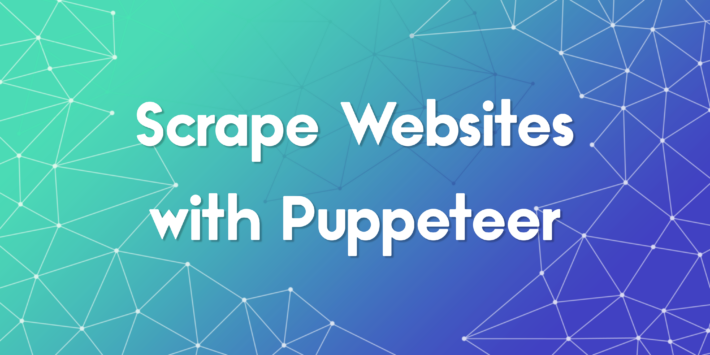How to Scrape Job Postings in 2025

Job boards continue to be a goldmine of structured data for career tools, hiring insights, and automation. Whether you are building an internal HR analytics tool or a job aggregator service, knowing how to scrape job postings remains a highly valuable skill in 2025. The challenge today is not just extracting data but doing so undetected, at scale, and in compliance with site structures that constantly evolve. In this guide, developers will learn how to extract job postings from real sites using modern scraping techniques, navigate through pagination and dynamic loading, use proxies, and handle anti-bot defenses such as browser fingerprinting.
Choosing the Right Method to Scrape Job Postings
Before diving into custom code, developers should evaluate the best strategy to acquire job data based on their goals, scale, and technical resources. There are three main approaches to scraping job postings, each with distinct trade-offs:
- Building your own in-house scraper: This method involves designing and maintaining a complete scraping system using tools like Puppeteer, headless browsers, and proxy infrastructure.
- Pros: Full control over how and what you scrape, with the flexibility to handle dynamic content, login flows, and anti-bot systems.
- Cons: Requires ongoing maintenance, high development effort, and operational resources to keep up with site structure changes.
- Using third-party scraping platforms: Tools like Scrapy Cloud or browser-based extractors can reduce the technical barrier and provide job data pipelines with minimal setup.
- Pros: Faster to implement, less engineering work, and usually comes with integrated features like scheduling, proxy rotation, and cloud storage.
- Cons: Limited customization, vendor lock-in, and restrictions on scraping advanced or authenticated content.
- Buying pre-scraped job datasets: Some companies aggregate and sell large volumes of job data for analytics or enrichment purposes.
- Pros: Instant access to bulk data, no scraping required, ideal for prototyping or trend analysis.
- Cons: Data may be outdated or missing fields critical to your use case, with little insight into how it was collected.
Choosing the right method to scrape job postings depends on whether you prioritize control, cost, or speed. Many developers begin with pre-scraped datasets to test hypotheses, then invest in a custom scraper for sustained, accurate, and scalable data collection.
Install and Prepare the Stack
We will use Node.js, Puppeteer, and optional plugins to simulate human browsing. Begin by setting up your project directory:
mkdir job-scraper-2025 cd job-scraper-2025 npm init -y
Install Puppeteer and supporting modules:
npm install puppeteer npm install puppeteer-extra npm install puppeteer-extra-plugin-stealth
These dependencies will allow us to control a headless browser and apply stealth techniques to bypass bot detection.
Launch Puppeteer and Visit Job Listings Page
Start by launching Puppeteer and visiting a job site like RemoteOK or any target board. This snippet initializes a stealth-enabled session and navigates to a target page:
const puppeteer = require('puppeteer-extra') const StealthPlugin = require('puppeteer-extra-plugin-stealth') puppeteer.use(StealthPlugin()) async function startScraper() { const browser = await puppeteer.launch({ headless: true, args: ['--no-sandbox'] }) const page = await browser.newPage() await page.setUserAgent('Mozilla/5.0 (Windows NT 10.0; Win64; x64)...') await page.goto('https://remoteok.com/remote-dev-jobs', { waitUntil: 'domcontentloaded' }) console.log('Page loaded') await browser.close() } startScraper()
This script avoids common detection techniques by spoofing the browser signature and using stealth plugins. You should always test with `headless: false` to visually inspect the rendering if needed.
How to Scrape Job Postings from Structured HTML
Once the page is loaded, extract job data by targeting DOM elements that contain job titles, company names, and links. You can use $$eval to query multiple elements and return structured results:
const jobData = await page.$$eval('.job', jobCards => { return jobCards.map(card => { return { title: card.querySelector('.company_and_position [itemprop="title"]')?.innerText.trim(), company: card.querySelector('.company_and_position [itemprop="name"]')?.innerText.trim(), link: card.querySelector('a.preventLink')?.href } }) })
ons.
Handle Pagination When Scraping Job Postings
Most job sites paginate their listings. You can either click the pagination buttons or modify the query parameters in the URL. For example, if the site uses offset-based pagination:
let currentPage = 1 let allJobs = [] while (currentPage <= 5) { const url = `https://example.com/jobs?page=${currentPage}` await page.goto(url, { waitUntil: 'domcontentloaded' }) const jobs = await page.$$eval('.job-card', cards => { return cards.map(card => ({ title: card.querySelector('.title')?.innerText, company: card.querySelector('.company')?.innerText, link: card.querySelector('a')?.href })) }) allJobs.push(...jobs) currentPage++ }
Always inspect the actual pagination behavior from the network tab to determine the correct pattern and avoid unnecessary page loads or errors.
Bypass Detection with Proxies and Rotating Headers

When scraping at scale, your IP address will likely be flagged. To avoid this, rotate proxies and user agents. Here is how to configure a session with a proxy:
const browser = await puppeteer.launch({ headless: true, args: ['--proxy-server=http://proxy-ip:port'] }) await page.authenticate({ username: 'yourUser', password: 'yourPassword' })
You can also randomize user agents on each request to simulate a more diverse traffic pattern. Use a rotating proxy service and a pool of real browser headers for best results.
Scraping Job Postings from Dynamic Sites with Scrolling
Sites like LinkedIn or Glassdoor often load jobs on scroll. You can simulate this by scrolling and waiting for network requests:
async function autoScroll(page) { await page.evaluate(async () => { await new Promise(resolve => { let totalHeight = 0 const distance = 100 const timer = setInterval(() => { window.scrollBy(0, distance) totalHeight += distance if (totalHeight >= document.body.scrollHeight) { clearInterval(timer) resolve() } }, 200) }) }) }
Call await autoScroll(page) before extracting content to ensure all jobs are rendered into the DOM.
Export Job Postings to a CSV File
Once the data is scraped, you can export it to a CSV file using the built-in fs module:
const fs = require('fs') const path = './jobs.csv' const headers = 'Title,Company,Link\n' const rows = allJobs.map(j => `"${j.title}","${j.company}","${j.link}"`).join('\n') fs.writeFileSync(path, headers + rows) console.log('Exported to jobs.csv')
For more advanced processing, use packages like json2csv or store the data directly into a database like MongoDB.
Scaling Up Your Job Scraper in Production
As scraping needs grow, you will want to modularize your scraper with features like:
- Job queues using Bull or RabbitMQ
- Rotating IPs with proxy providers
- Task schedulers for recurring scraping
- Logging and retry logic for failed pages
You can also use serverless functions to periodically trigger scrapers or Docker containers for easier deployment. Monitoring site structure changes is critical to ensure long-term scraper stability.
Next Steps and Strategic Advice
By learning how to scrape job postings in 2025, developers can build smarter job boards, integrate real-time listings into hiring platforms, or extract analytics data at scale. The key to staying successful is combining stealth strategies with modular design and always respecting legal boundaries. Avoid scraping personal information and honor robots.txt where possible.
Continue refining your scraper with session replay protection, captcha handling, and performance optimization. Consider using headful browser sessions for extra stealth and testing. Build a template system so new job sites can be added with minimal changes. The web is changing, and your scraper should be ready to adapt.


